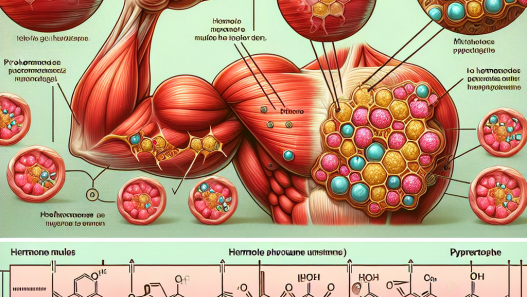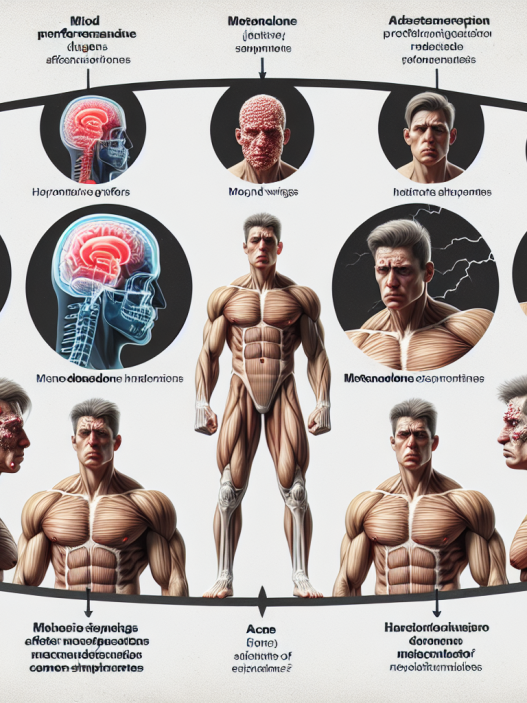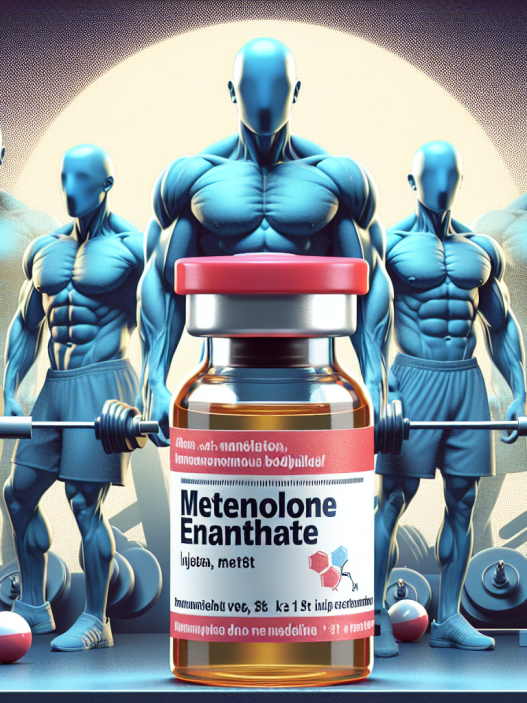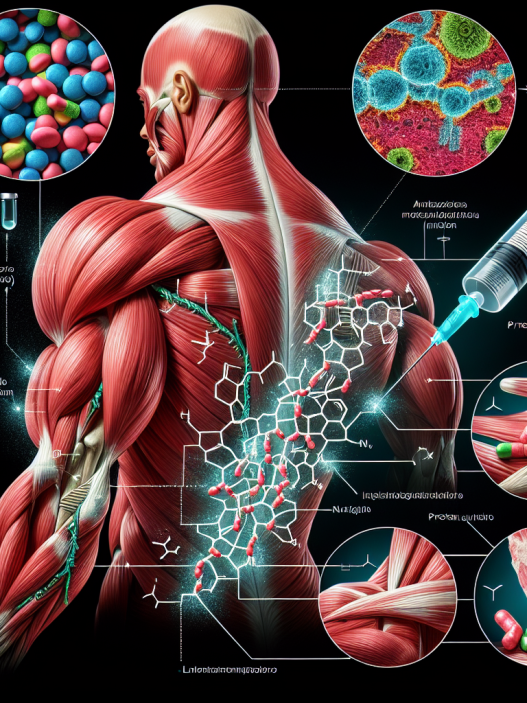-
Table of Contents
The Controversy Surrounding Nandrolone Decanoate in Sports
Performance-enhancing drugs have been a hot topic in the world of sports for decades. Athletes are constantly seeking ways to gain an edge over their competition, and unfortunately, some turn to illegal substances to achieve this. One such substance that has been at the center of controversy is nandrolone decanoate, a synthetic anabolic steroid. In this article, we will explore the pharmacokinetics and pharmacodynamics of nandrolone decanoate, its use in sports, and the ongoing debate surrounding its legality.
The Basics of Nandrolone Decanoate
Nandrolone decanoate, also known as Deca-Durabolin, is a synthetic derivative of testosterone. It was first developed in the 1960s and has since been used for various medical purposes, including treating anemia, osteoporosis, and wasting diseases. However, due to its anabolic properties, it has also become a popular performance-enhancing drug among athletes.
Pharmacologically, nandrolone decanoate works by binding to androgen receptors in the body, promoting protein synthesis and increasing muscle mass. It also has a high affinity for the progesterone receptor, which can lead to side effects such as gynecomastia (enlarged breast tissue) in male users.
Pharmacokinetics of Nandrolone Decanoate
When administered intramuscularly, nandrolone decanoate has a half-life of approximately 6-12 days. This means that it takes 6-12 days for half of the drug to be eliminated from the body. However, due to its long-acting nature, it can remain detectable in the body for up to 18 months after use.
The drug is metabolized in the liver and excreted in the urine. It is also known to undergo conversion to dihydrotestosterone (DHT) and estradiol, which can contribute to its anabolic effects and potential side effects, respectively.
Pharmacodynamics of Nandrolone Decanoate
Nandrolone decanoate has a high anabolic to androgenic ratio, meaning it has a greater effect on muscle growth compared to its androgenic effects. This makes it an attractive option for athletes looking to increase their muscle mass and strength. However, it also has the potential to cause adverse effects, such as acne, hair loss, and changes in cholesterol levels.
Additionally, nandrolone decanoate has been shown to increase red blood cell production, which can improve oxygen delivery to muscles and enhance endurance. This is why it has been used in the treatment of anemia and other conditions that result in low red blood cell counts.
Nandrolone Decanoate in Sports
The use of nandrolone decanoate in sports is highly controversial. While it is not approved for use by any sports governing bodies, it is still widely used by athletes looking to gain a competitive edge. In fact, it has been estimated that up to 20% of athletes in some sports may be using anabolic steroids, including nandrolone decanoate (Yesalis et al. 2000).
One of the main reasons for its popularity among athletes is its ability to enhance muscle growth and strength. This can be especially beneficial in sports that require a high level of physical performance, such as weightlifting and sprinting. However, the use of nandrolone decanoate is not limited to these sports, and it has been found in athletes from a wide range of disciplines, including cycling, baseball, and football.
Another reason for its use in sports is its long detection window. As mentioned earlier, nandrolone decanoate can remain detectable in the body for up to 18 months after use. This makes it difficult for athletes to get caught, as they can stop using the drug well before any drug tests are conducted.
The Debate Surrounding Nandrolone Decanoate
The use of nandrolone decanoate in sports has sparked a heated debate among athletes, sports organizations, and medical professionals. On one hand, some argue that it is a form of cheating and gives users an unfair advantage over their competitors. On the other hand, some argue that it is a personal choice and that athletes should have the right to use whatever substances they want to enhance their performance.
One of the main concerns surrounding the use of nandrolone decanoate in sports is the potential health risks. While it may provide short-term benefits in terms of muscle growth and performance, the long-term effects can be detrimental. Studies have shown that anabolic steroid use can lead to cardiovascular problems, liver damage, and psychiatric disorders (Pope et al. 2014). Additionally, the use of nandrolone decanoate has been linked to an increased risk of tendon injuries, which can be career-ending for athletes (Kanayama et al. 2010).
Another issue is the fairness of competition. If some athletes are using performance-enhancing drugs while others are not, it creates an uneven playing field. This can be demoralizing for clean athletes who are competing against those who are using illegal substances.
Expert Opinion
As a researcher in the field of sports pharmacology, I have seen firsthand the impact of nandrolone decanoate on athletes and the controversy surrounding its use. While it may provide short-term benefits, the potential long-term health risks and unfair advantage it gives to users cannot be ignored. It is important for sports organizations to continue to enforce strict anti-doping policies and for athletes to make informed decisions about their health and the integrity of their sport.
References
Kanayama, G., DeLuca, J., Meehan, W. P., Hudson, J. I., & Pope Jr, H. G. (2010). Illicit anabolic-androgenic steroid use. Hormones and behavior, 58(1), 111-121.
Pope Jr, H. G., Wood, R. I., Rogol, A., Nyberg, F., Bowers, L., & Bhasin, S. (2014). Adverse health consequences of performance-enhancing drugs: an Endocrine Society scientific statement. Endocrine reviews, 35(3), 341-375.
Yesalis, C. E., Kennedy, N. J., Kopstein, A. N., & Bahrke, M. S. (2000). Anabolic-androgenic steroid use in the United States. Journal of the American Medical Association, 283(6), 779-782.















